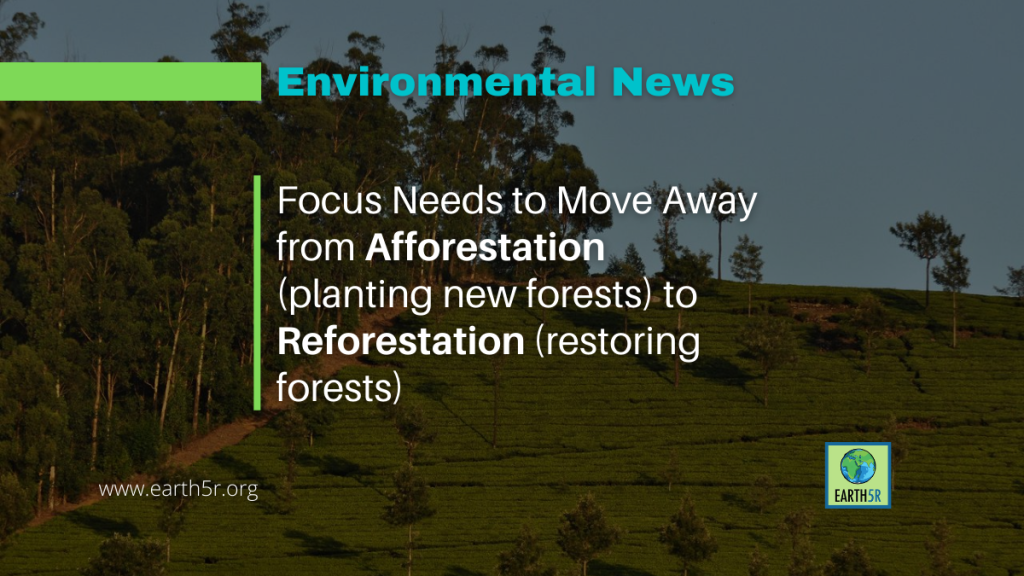
Focus Needs To Move Away From Afforestation (Planting New Forests) To Reforestation (Restoring Forests)
Environmental News from India:
- While trees are important carbon sinks, there is significant data that shows that the global potential for trees to mitigate climate change is grossly overestimated.
- Low survival of saplings, unsuitable planting sites, lack of good quality seeds, wrong trees planted in the wrong places and large-scale planting without a plan are some of the reasons that tree plantation drives are not always successful in the long term.
- Planting trees can be beneficial in many ways. However, the focus needs to move away from afforestation (planting new forests) to reforestation (restoring forests).
As the world is struggling to combat climate change, one idea – planting trees – seems to be taking hold as a panacea for curing the ills of pollution, soaring carbon emissions, and degrading soil health.
But just planting trees is not a cure-all for tackling global warming and climate change, multiple studies have found. Right from selecting the correct species to then monitoring and maintaining saplings and planning for large-scale tree plantation, effective tree plantation goes beyond just planting of the tree.
Ill-planned and unscientific tree plantation programs could in fact lead to maladaptation, as pointed out by some authors of the United Nations’ Intergovernmental Panel on Climate Change (IPCC) Working Group II report. Maladaptations are actions that may lead to increased risk of adverse outcomes such as increased greenhouse gas emissions, increased or shifted vulnerability to climate change and inequity. Such actions can also dent biodiversity and ecosystem resilience and constrain ecosystem services.
What Happens After Trees Are Planted?
Most saplings, after being planted, also need to be watched over and nurtured before they grow strong and independent, and begin their work in sequestering carbon. Caring for and monitoring planting efforts over time are critical, but have not yet become a core part of tree-planting drives and programs.
According to studies in the Central Himalayas and the Coromandel coast (southeastern coast of India), planted trees showed hugely variable survival rates over 5-10 years. Depending on whether these were native or exotic species, in mixed- or mono-species plantations, the planted saplings’ survival ranged from 51–87% at one site, 0–100% in another, and 35–100% in yet another. While 100% sapling survival over 5 years sounds like a positive trend, this is true only for very few species.
Krutika Ravishankar, Co-founder and Executive Director Farmers for Forests, who is working to turn barren, degraded pieces of land in Maharashtra into thriving forests, writes in an article about the challenges her team faced, from financing operations to bargaining with vendors for setting up drip irrigation systems and chasing sapling vendors to provide the right species of trees for planting. In the 2020 article she recommends that when one pays to plant a tree somewhere, hold the organisation accountable by asking for not only the geo-tag but also regular data on the health and status of the tree, satellite indices and if a visit to the plantation site is possible.
To read top environmental news from India, please visit https://earth5r.org
Source: Mongabay




